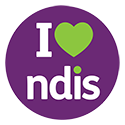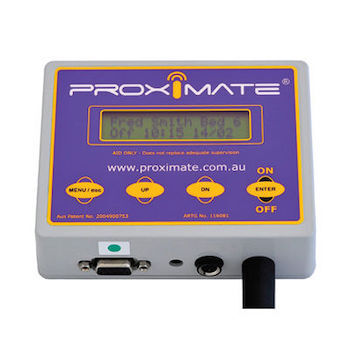At Access Rehabilitation Equipment, we commit to providing you and your loved ones solutions for life! Fitting your lifestyle, each aid and equipment is tailored to the unique challenges you are facing, so work with us to find the independence and mobility you want!

Falls are a common and devastating complication of hospital care, with most occurring when patients attempt to leave their beds unassisted. To reduce this risk, bed exit alarms have become an essential tool by providing an early warning system for hospital staff when patients try to get out of their beds on their own without enough support.
One notable brand in this field is the Proxi-mate wireless bed alarm, which has become the monitoring system of choice for hospitals and care environments in falls prevention. Before making a purchase, it's important to understand what bed exit alarms are and how they can benefit hospital staff and patients.
Why are bed exit alarms effective?
Bed exit alarms work by detecting a patient's movement as they attempt to leave the bed. Sensors are placed under the mattress or on the bed frame, and when the patient begins to move, the alarm is triggered. The purpose of these alarms is to alert nursing staff to respond quickly, potentially preventing falls and injuries. However, it’s important to note that bed alarms should be used in conjunction with other fall prevention strategies to increase its effectiveness.
Advantages and Disadvantages of Bed Exit Alarms
Bed exit alarms provide significant benefits in hospital settings. However, like any technology, they come with their own set of pros and cons. Understanding these can help healthcare providers make informed decisions about their use.
Advantages:
- Wireless: Many modern bed exit alarms are wireless, so there’s no need for cumbersome wiring. This offers greater flexibility and ease of installation, which is especially beneficial in busy hospital environments where space and maneuverability are critical.
- Ease of Use: Bed exit alarms are generally simple to set up and operate, so staff can quickly implement the system without extensive training.
- Portability: Wireless bed exit alarms can be easily moved and repositioned as needed, making them suitable for various hospital settings.
- Real-time Monitoring: These alarms provide immediate alerts for nursing staff to respond quickly to a patient's movement, thereby preventing falls and injuries.
Disadvantages:
- Interference: Wireless bed exit alarms may be susceptible to interference from other electronic devices, potentially affecting their performance.
- Battery Dependency: Wireless alarms rely on batteries, which require regular checking and replacement to ensure continuous operation.
- False Alarms: Bed exit alarms can sometimes trigger false alarms, causing unnecessary disturbances and requiring staff to frequently check on patients.
- Initial Cost: The initial investment in bed exit alarm systems can be high, which might be a consideration for some healthcare facilities.
Our recommendation of the best bed exit alarm
Based on its features and performance, we recommend the Proxi-mate Wireless Alarm System that offers reliable monitoring, easy setup, and effective falls prevention capabilities. It uses electronic proximity sensing, providing early warnings without false alarms from normal patient movement. It's versatile, easily integrating with nurse call systems or personal pagers, and can be quickly relocated between rooms. This system offers efficient, personalised care while minimising unnecessary disruptions for healthcare staff.
Are bed sensor mats a form of restraint?
Bed sensor mats are not considered a form of physical restraint as they do not limit a patient's movement. Instead, they serve as a monitoring tool to alert staff when a patient attempts to exit the bed.
Do bed exit alarms prevent falls?
Yes, bed exit alarms can significantly help prevent falls. By alerting nursing staff to patient movement, these alarms enable timely intervention, which can prevent patients from falling and sustaining injuries. While they are not foolproof, they are a critical component of a comprehensive falls prevention strategy.
Where can bed exit mats be used?
Bed exit mats are versatile and can be used in various healthcare settings:
- Hospitals: Including wards, intensive care units, and emergency departments.
- Nursing Homes: For monitoring residents who are at risk of falls.
- Rehabilitation Centers: To ensure the safety of patients undergoing recovery.
At ARE, we have supplied Proximate bed alarm systems to hospitals across Gippsland, including Latrobe Regional Hospital, Bairnsdale Regional Health, and Yarram & District Health Service. The Proximate bed alarm system is available for both purchase and hire to provide flexibility based on the facility’s needs.
Conclusion
Bed exit alarms are useful in maintaining patient safety in hospital wards. While these devices significantly contribute to reducing fall-related injuries, it's important to remember that they are most effective when used as part of a comprehensive fall prevention approach.



 Providing solutions for life
Providing solutions for life







